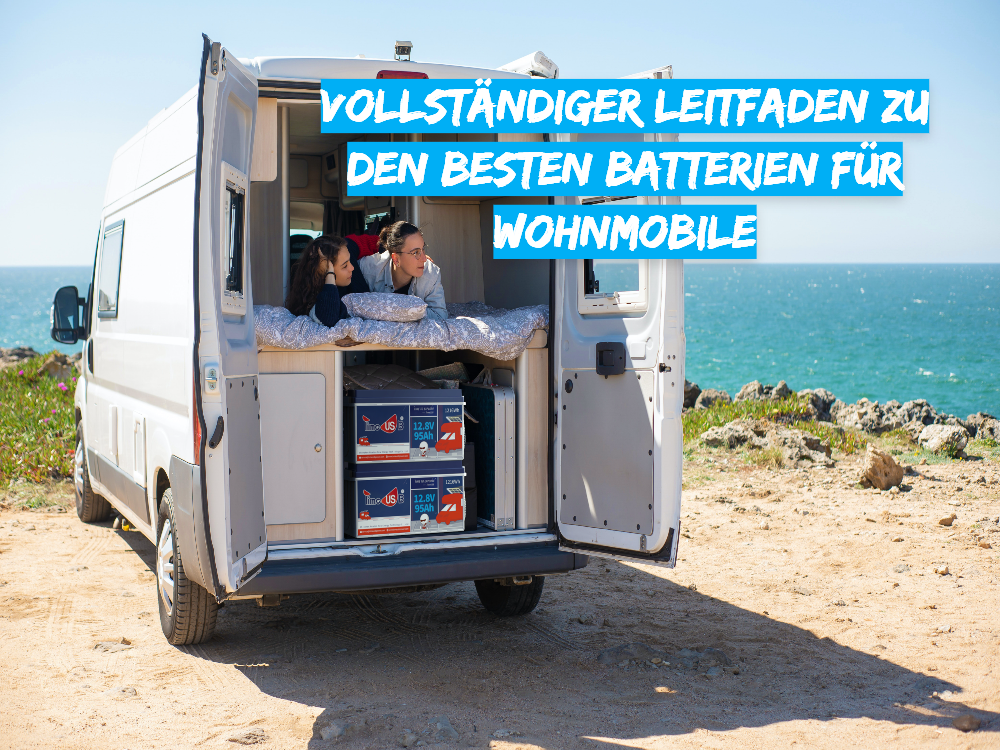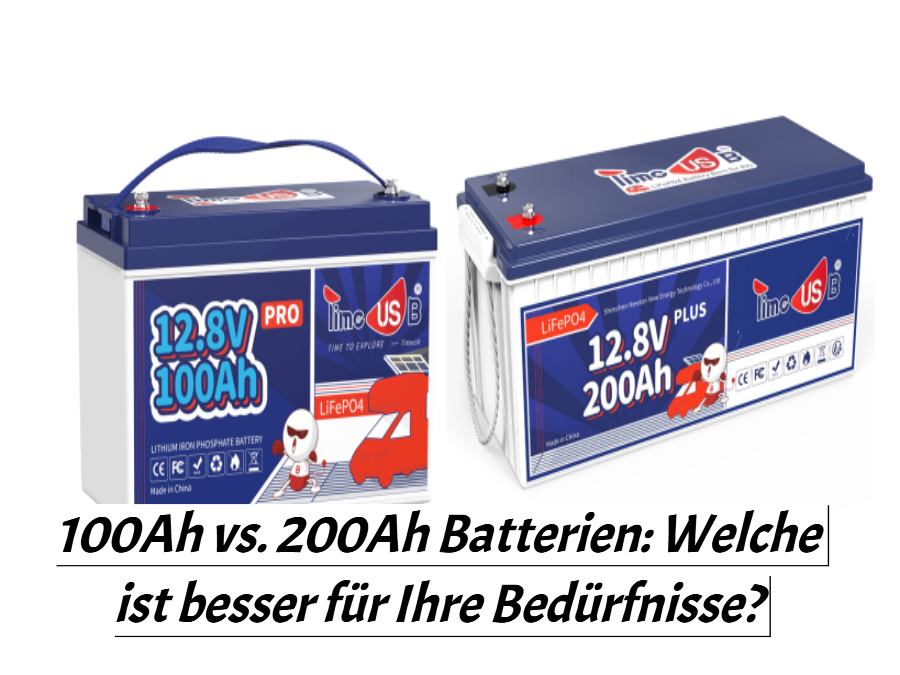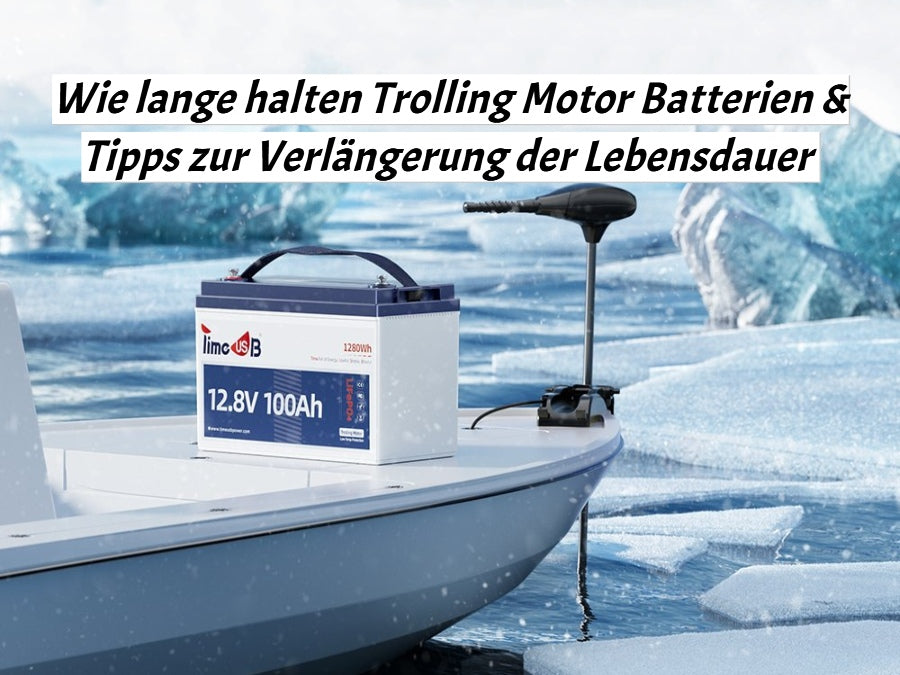A Complete Guide to RV Batteries

Whether you use your RV full-time or just take it for occasional vacations, a reliable battery is essential. While limited space may be appealing, that sentiment changes when the RV starts having problems. To avoid electrical problems, it's important to have a solid understanding of electrical layout.
Having a reliable battery kit is essential for your travels. If you're not connected to a power source and are traveling in your RV, it's important to make sure you have the right batteries for your RV. While there are countless battery options for both RVs and regular vans, not all batteries are the same.
Below you'll find everything about RV batteries and some of the best options.
Understanding RV Batteries
A motorhome requires two types of batteries. The first is the starter battery, which is essential for the engine and is usually included with the van. Unless it needs replacing, you do not need to add a starter battery to your motorhome.
However, the starter battery cannot provide electricity or power to the refrigerator and water heater. Using the van's electricity directly from the starter battery puts a strain on the battery and causes premature wear. For this purpose, a second battery is required for the rear of the van, often referred to as a house battery, service battery or leisure battery.
The home battery is responsible for powering lights, electronics, and appliances. It is crucial to choose the right type of home battery, as an inadequate battery can result in blackouts, cold water, or the inability to run multiple appliances at once. The size and capacity of the battery you need depends on your energy usage and the number of amp hours your appliances use.
For example, if a television draws four amps and runs continuously, a 20 amp-hour battery can power it for five hours before it runs out. Most appliances do not draw that many amps continuously and battery size can vary from small to large. Many RVs have more than one battery to increase the amp-hour capacity, allowing for longer use of lights and appliances.
Different types of batteries have a capacity of more than one amp-hour. Battery size can also be determined by the type of fluid contained in the batteries, with options such as lithium iron phosphate, lead acid, and lithium ion batteries being the most popular. These options vary in price and longevity.
Beyond the amp-hour rating and battery type, it's important to consider whether the battery has an absorbent glass mat (AGM) to prevent leaks or spills. Although AGM batteries tend to be more expensive, they can prevent damage if the battery does become compromised.
Another important aspect is the battery management system (BMS)that monitors the battery's lifespan, charging and performance. A battery equipped with a BMS requires a special charger and in some cases it may be necessary to install a BMS.

Before you start looking at battery testing, it's important to understand these differences.
What you should consider when choosing caravan leisure batteries
Before deciding on the best type and size for your needs, it's important to understand the key basics of leisure batteries.
1. Depth of discharge (DoD)
Depth of discharge (DoD) measures how deeply a battery can be discharged relative to its capacity. Different batteries have different DoD values. Therefore, it is important to use a battery monitoring system to accurately determine DoD and obtain detailed battery information for informed decision making. Lead-acid batteries, such as AGM leisure batteries, typically have a DoD of around 50%. In contrast, lithium batteries such as Timeusb safely achieve a DoD of 100% without damaging the batteries.
2. State of charge (SOC)
SoC indicates the state of charge of a battery, with 100% representing a fully charged battery and 0% representing an empty battery. SoC is inversely related to DoD. SoC of 100% means 0% DoD and vice versa.
3rd cycles
A cycle occurs when a battery is fully charged, discharged, and then fully charged. Each completion of this cycle corresponds to one count. While cycling technically ages the battery, it helps maintain its activity and overall health. Different batteries have different life cycles depending on their design.
4. Battery life
This is the length of time a battery can perform a certain number of cycles. When the battery is nearing the end of its life, under certain circumstances it may take longer to charge and discharge more quickly. With proper care, the right connection and suitable chargers, the life of a battery can be significantly extended.
5. Battery capacity
This is the amount of energy a battery can store and deliver, often measured in ampere hours (Ah) or milliampere hours (mAh). A higher capacity typically means greater energy storage and longer device operation before recharging is required.
Common leisure battery capacities
100Ah up to 150Ah: Suitable for light to moderate use, often found in smaller motorhomes or for short trips.
150Ah to 200Ah: Offers a good balance of capacity and portability and can power larger appliances such as refrigerators and televisions, commonly used in medium-sized RVs, caravans and boats.
Over 200Ah: Designed for longer off-grid trips with higher power demands, suitable for larger RVs, camper vans and boats.
4 different battery types for motorhomes
Choosing the right batteries for your van conversion is crucial. Nobody wants to be left in the dark with lukewarm drinks, right?! Understanding the types of batteries available, determining the capacity that suits your van lifestyle, evaluating the relative costs and understanding the maintenance requirements will help you choose the ideal camper van batteries for your needs.
We will examine four types of batteries:
1. Flooded lead-acid batteries (FLA)
2. Gel batteries (GEL)
3. Absorbed glass mat batteries (AGM)
4thlithium-ion batteries (LiFePO4)
Each type has different compositions and behaves differently under different conditions.
1. Flooded lead-acid batteries
FLA batteries consist of two lead plates flooded with liquid electrolyte (sulfuric acid) and react when charged to store electricity.
Advantages
Economically
Resistant to occasional overload
Proven technology
Lifespan of 4–8 years with regular maintenance and careful charging
Disadvantages
With increasing age, performance decreases
Requires storage in the case
Limited to a maximum DoD of 50%
The release of gases requires venting
Strict installation and maintenance regulations required
2. Gel batteries
Similar to FLA, but filled with gel instead of liquid acid.
Advantages
No emission of gases
Sealed and leak-proof
maintenance-free
operation in a wider temperature range
Ideal for long-term storage
Disadvantages
Sensitive to the depth of discharge
Poor recovery from low DoD
More expensive and heavier
3. Absorbed glass mat batteries
Works similarly to FLA and Gel, but with electrolyte-soaked glass fibers between the plates.
Advantages
Long shelf life
maintenance-free
Suitable for longer storage
Can be installed sideways and is leak-proof
Smaller than the gel equivalent
Disadvantages
Sensitive to the depth of discharge
Poor performance in cold temperatures
More expensive and heavier
4. Lithium-ion batteries
The renowned lithium-ion battery offers advanced battery technology at a premium price.
Advantages
30% lighter and smaller than FLA, GEL and AGM
90% usable capacity compared to FLA, GEL and AGM, requiring less battery for equivalent ampere hours
Fast charging due to low internal resistance
Versatile installation
maintenance-free
Long life cycles with proper charging and discharging
Disadvantages
Expensive at first, although prices are gradually coming down. Fortunately, Timeusb offers technology-based lithium batteries with the best value for money to make your upgrade easier.
Each battery type meets different van conversion needs. Knowing the different characteristics will help you choose the most suitable option for your specific needs.
What is the best battery for a motorhome?
Lithium-ion batteries are often considered the better choice for RVs due to several key advantages:

Timeusb 12V 100Ah Pro lithium deep cycle battery
1. Energy density: Lithium-ion batteries have a higher energy density than traditional lead-acid batteries, meaning they can store more energy in a smaller, lighter package.This is crucial for motorhomes where space and weight are at a premium.
2. Depth of discharge (DoD): Lithium-ion batteries can typically discharge to much lower levels (often around 80–90%) without affecting their lifespan, whereas lead-acid batteries, particularly lead-acid and gel types, are typically limited to discharging to around 50% without causing any ill effects.
3. Weight and size: Lithium-ion batteries are lighter and more compact than their lead-acid counterparts, allowing for more flexible installation options and reducing the overall weight of the RV. This benefits fuel efficiency and handling.
4. Longevity: Lithium-ion batteries generally last longer than lead-acid batteries, especially when properly maintained and operated within recommended parameters. They can withstand more charge cycles and have a lower self-discharge rate, making them reliable for longer use.
5. Charging efficiency: Lithium-ion batteries can be charged faster and more efficiently than lead-acid batteries, resulting in shorter charging times and potentially allowing more frequent charges when connected to solar panels or other charging sources.
6. Maintenance: Lithium-ion batteries are virtually maintenance-free, unlike lead-acid batteries, which often require regular maintenance and monitoring of electrolyte levels.
It's important to note that while lithium-ion batteries offer significant benefits, they come with a higher upfront cost. However, many campervan owners find that the long-term benefits, including greater usable capacity, longer lifespan and convenience, often outweigh the initial investment.
Ultimately, choosing the type of battery for an RV depends on individual needs, budget, and specific usage requirements, but for many, lithium-ion batteries are a better choice due to their performance, longevity, and overall convenience.
Can I use a vehicle engine battery as a leisure battery?
It is not ideal to use a regular vehicle engine battery as a leisure battery in an RV or off-grid mobile facility. Vehicle engine batteries are typically designed for engine starting and delivering short bursts of high current. These batteries are not optimized for deep discharge, which is often required in leisure or auxiliary battery applications.
Leisure batteries, also known as deep cycle batteries, are specifically designed to deliver consistent power over extended periods of time and are able to withstand deep discharges without damaging the battery. In contrast, motor batteries are not designed to withstand deep discharge, which can significantly shorten their lifespan and reduce their effectiveness.
In addition, recreational batteries often come with thicker plates and other modifications that make them more suitable for the cyclic charging and discharging typical of recreational vehicle use. Using a standard motor battery for this purpose can result in premature failure due to the different battery requirements in the recreational setting.
If you plan on powering appliances, lighting, and other electrical components in your RV, it is highly recommended that you invest in a suitable leisure battery or a deep cycle battery specifically designed for this type of use. These batteries are designed to meet the demands of extended deep discharges, making them better suited to the needs of powering appliances and electronics in an RV or mobile living space.
How to charge your RV battery
There are 3 ways to charge
1. Use of the AC-DC charger
2. Solar panel with charge controller
3. Generator with DC-DC charger




